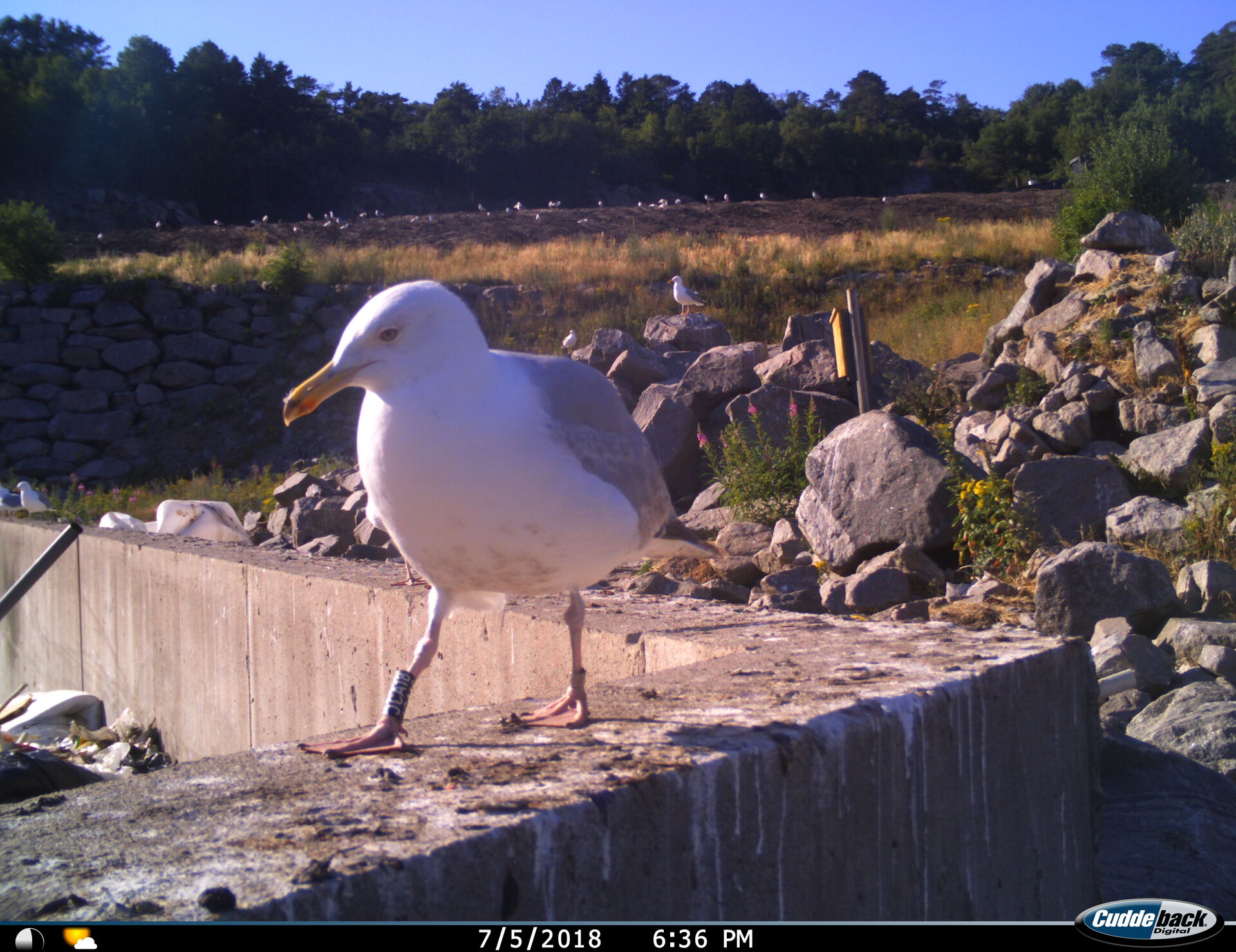
Since 2011 a total of more than 9000 gulls of six species have been marked with black alphanumeric field readable leg-rings in the Oslo-fjord and Skagerrak area. Bird enthusiasts in Norway and abroad report sightings of ringed gulls on a web-portal (https://www.ringmerking.no/cr/), which has resulted in a valuable data set with more than 70 000 re-sightings. To boost data collection, a number of cameras have been placed at strategic locations where gulls gather (such as rooftops). Images from these locations have then been scanned manually by human observes to record ring numbers, species, and age-class based on plumage. To date more than 100 000 such images have been manually processed, and we still have available a large number of images that are not yet processed and new data is coming in faster than the capacity to process them.
The primary goal of this Master’s project is to develop an automated system for ring reading by the use of Artificial Intelligence (AI)/machine learning. This is more challenging than most applications of automatic reading of e.g. car license plates because the gulls are sometimes far from the camera and often just parts of the code are visible (the code is printed vertically three times around the ring, so often one can see the bottom part of the code on one side of the ring and the top part on the other – which is an interesting challenge). Background and light conditions may also vary largely within and among pictures from several locations. To aid individual identification, we can make use of the fact that the set of potential codes is known. The success of the developed system will be evaluated on a set of pictures that has not been used in the training of the model.
Depending on the progress in developing the automated ring-reading system, the Master’s student will have the opportunity of extending the project in various ways, including counting the number of birds with and without rings (this information can be used in abundance estimation in addition to the individual ID’s), and identifying the species and age class (this will also limit the set of potential ring codes, and hence aid accurate identification).
The student should include some biological context to motivate the work, and the aim is that the student will also include a simple analysis based on the data generated by his developed methods to get a greater understanding of methodological challenges and prospects. This may for example involve estimation (and comparison) of abundance through so called mark-resight models (using information on both marked and unmarked individuals), or capture-recapture models focusing on estimating survival (the latter requires use of additional data). Such statistical models, may also be developed further to incorporate the uncertainty in the identifications from the AI-trained model (e.g modelling identification scores (observation model) as a mixture of conditional distributions).